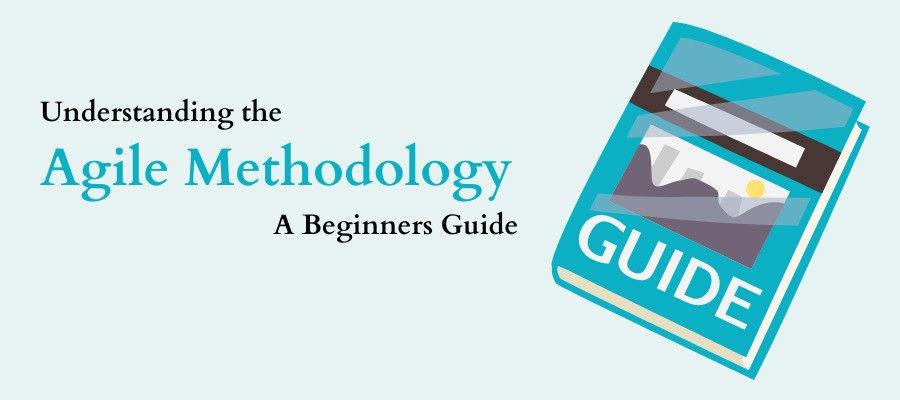Understanding the Agile Methodology: A Beginner's Guide

The ideas and practices of the Agile methodology facilitate cooperative, productive, and timely teamwork. The Agile Manifesto, upon which it is founded, was written to offer a structure for software development teams so that they may swiftly adapt to client requests and generate high-quality products. According to the Agile Manifesto, "the demands and satisfaction of the customer should take precedence over the use of any particular method or tool."
The Agile Methodology is used by many software development teams and other types of teams to help them work together collaboratively and efficiently. This guide will provide you with an overview of the Agile Methodology.
Agile methodologies
The true power of Agile cannot be realized without adopting Agile practices. These are the "how" that allow us to put the Agile way of thinking into action. Teams and organizations may scale their Agile methods with the help of several frameworks. There are several Agile approaches, each of which takes a somewhat different tack toward increased agility. Each approach has its advantages and disadvantages; you should weigh these factors carefully before settling on the one that's ideal for your company. Agile approaches are a terrific way to stimulate innovation, enhance productivity, and foster collaboration, and they are vital for attaining agility.
Famous Agile methodologies
Here are some of the famous Agile methodologies:
- Scrum
Scrum is an Agile methodology for developing and delivering software promptly and effectively. One of the most widely used Agile practices, it is widely adopted by organizations with software development departments. Scrum is an iterative and incremental development framework, which implies that teams are constantly re-evaluating and modifying their process and deliverables to better suit the demands of their customers.
- Extreme Programming (XP)
Extreme Programming (XP) is an Agile methodology that focuses on delivering working software quickly and efficiently. It is based on four key values: communication, simplicity, feedback, and courage. XP encourages teams to embrace change and to be flexible and adaptive to their customers' needs. It also emphasizes collaboration and communication between team members and customers.
- Lean Software Development
The Agile methodology, known as "Lean Software Development," aims to maximize productivity while minimizing unnecessary effort. It's built on Lean manufacturing concepts and pushes for streamlined processes that prioritize the customer and eliminate extraneous work.
- Kanban
Kanban is an Agile methodology based on "Just-in-Time" manufacturing principles. It encourages teams to focus on delivering working software quickly and efficiently. It also emphasizes collaboration and communication between team members and customers.
- Crystal
It focuses on delivering working software quickly and efficiently while emphasizing the importance of communication and collaboration between team members and customers.
- FDD
In contrast to traditional waterfall development methods, FDD is an Agile methodology that prioritizes the timely and reliable delivery of products. The iterative and incremental development concepts allow teams to successfully partition large projects into more manageable chunks. This aids them in maintaining momentum and meeting their deadlines.
- DSDM
The Dynamic Systems Development Method (DSDM) is an agile technique promoting the quick development of reliable and robust software. It emphasizes iterative and incremental software development, with the final objective of producing functional software promptly and efficiently. This method encourages teams to divide their projects into smaller, more manageable chunks, allowing them to receive stakeholder feedback and iterate on the design as needed. Moreover, the DSDM emphasizes stakeholder cooperation and communication, making the process more iterative and adaptive. This, in turn, leads to better levels of success and pleasure among customers.
These are some of the most famous Agile Methodologies. Each has its own pros and cons, and it’s up to the team to decide which one fits best.
Agile best practices
Agile best practices are essential for staying ahead of the game. To make sure you are on the right track, it's important to keep the following tips in mind. Start by seeing failures as a learning opportunity. Don't let them discourage you, but use them to get better. Adaptability is key, so be sure to embrace change. Streamline your processes by eliminating anything that does not provide value. Allow for flexibility in your plans, and use retrospectives to listen and learn from your mistakes. Above all, prioritize the customer experience and decide based on their needs. Last, don't forget to use the many agile tools and resources available today. Following these agile best practices can make your business more efficient and give you an edge over the competition.
Conclusion
The Agile Methodology and a software development team may do far more than any member could achieve individually. It's built on iterative and incremental development, which pushes teams to constantly assess and adapt their methods and outputs to guarantee that the final result is exactly what the client wants. Several Agile techniques take somewhat different approaches, each with its own benefits and drawbacks. Teams and organizations should seriously consider these aspects before making a final decision.
Reference
- https://www.easyagile.com/blog/agile-101/
- https://www.planview.com/resources/guide/agile-methodologies-a-beginners-guide/



